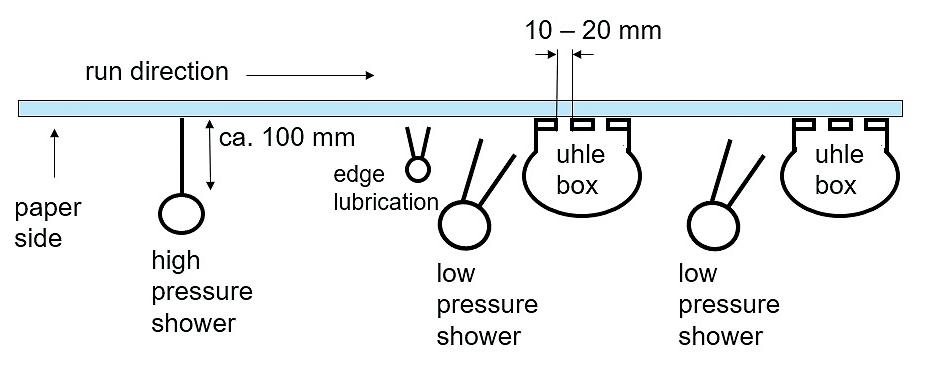
6 minute read
Increase lifetime and improve runnability with the correct felt conditioning
How should the showers be set up?
Generally speaking, conditioning starts with a high pressure shower. If necessary, this is followed by an edge shower. This should then be followed by a low pressure shower and a Uhle box. This order should be strictly adhered to. With this setup, the felt surface is adequately lubricated before coming into contact with the aggressive ceramic coatings of the Uhle box covers. All these elements generally interact with the paper side of the felt.
Advertisement
High-pressure shower for deep cleaning

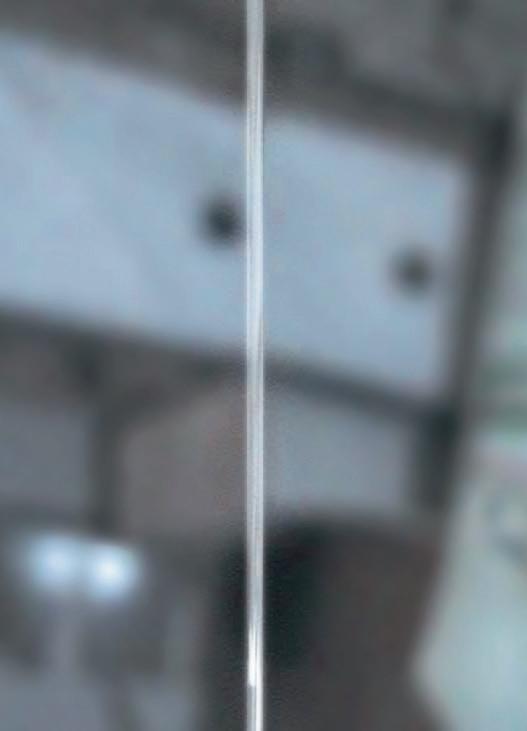
Dirt, fines and fillers are introduced into the process through the paper stock, which can subsequently lead to compaction of the felt. This can result in diminished dewatering over the lifetime of the felt. Numerous settings must be taken into account to ensure that mechanical felt cleaning is effective. The more precisely this is carried out, the more efficient the felt performance.
Cleaning must be continuous and even
The basic objective is the removal of dirt and deposits from the inside of the felt in a continuous and balanced manner. This needs to be done over the entire length and width of the clothing. It is important to ensure that every square centimetre of the felt is cleaned equally well. If this is not done, it is likely that there will be different levels of contamination and, therefore, different levels of felt compaction. This can then lead to cross-profile variations in the felt and paper, or can incur locally increased wear. And, last but by no means least, to premature removals.
The needle jet
There are several key factors in the correct operation of a highpressure shower pipe. Two of them are particularly important to pay attention to: l The high-pressure needle jet must always be laminar. This is the only way to ensure that the full energy of the jet reaches the felt surface. A turbulent jet that is inclined to break up before reaching the felt will lose energy and therefore be unable to apply its full cleaning power (the differences are shown in Figures 1a and 1b). l Heimbach also recommends that a distance of 100mm from the shower nozzle outlet to the felt surface is respected. Heimbach has had good experiences when the needle jet works at a 90-degree angle to the press felt.
The nozzles
All nozzles need to be in perfect condition to ensure that the felt is evenly cleaned across its full width. They must not be either polluted or clogged (see Figure 2). Unfortunately, this is often not the case in practice. Accordingly, felts are frequently encountered in the most varied degrees of contamination (See Figure 3). The distance between individual nozzles should ideally be between 100 and 150mm. The exact distance depends on the required cleaning intensity in the respective felt position. This leads on to another important aspect of felt conditioning: the correct oscillation of the highpressure shower pipe. In order to reach every single point of the felt with a thin needle jet, the high-pressure shower must constantly traverse across the width. For the most homogenous deep clean to be effective, a single or multiple of the nozzle spacing should be selected as the stroke.
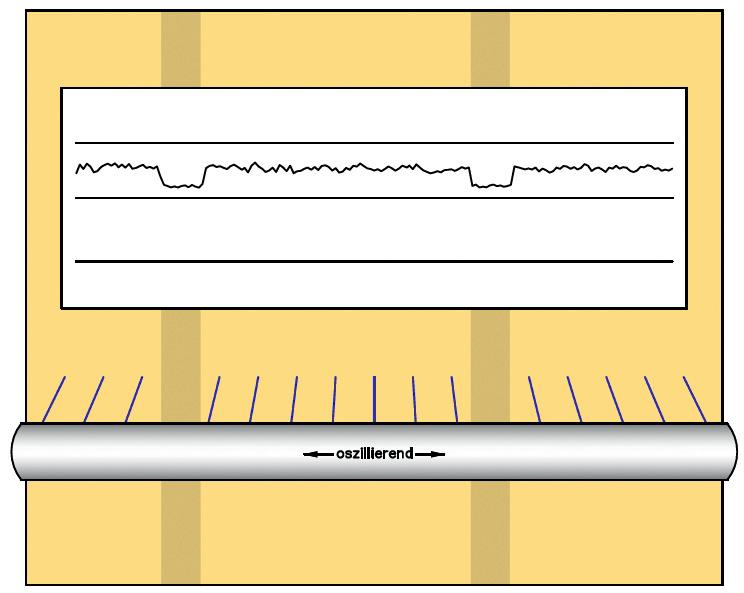
As for nozzle quality, two further questions arise: What should be the optimum diameter? How high should the pressure applied reach? For some years now, the trend has been towards smaller-diameter nozzles. They certainly offer better cleaning – provided they do not become prematurely clogged due to poor water quality. Diameters between 0.7 and 0.9mm are common today.
Water quality
Central to the service life of the shower nozzles is the quality of water in use. Heimbach advises fresh water or alternatively superclear filtrate. The aim is always to keep the amount of suspended particles introduced into the system in the water as low as possible. Otherwise, there is a risk that nozzles can become clogged or nozzle filters polluted.
As much as necessary, but as little as possible
The higher the pressure, the more the stress on the felt surface. Of course, finer fibres will have less resistance than coarser ones. Overall, the felt should be treated under moderate pressure (up to 10 bar) over the first few days with the intensity then increased over clothing lifetime. For continuous HP cleaning, 25 bar should be regarded as the upper limit. For short periods, around 30 bar can be acceptable.
Ultra-high pressure showers for even better felt life
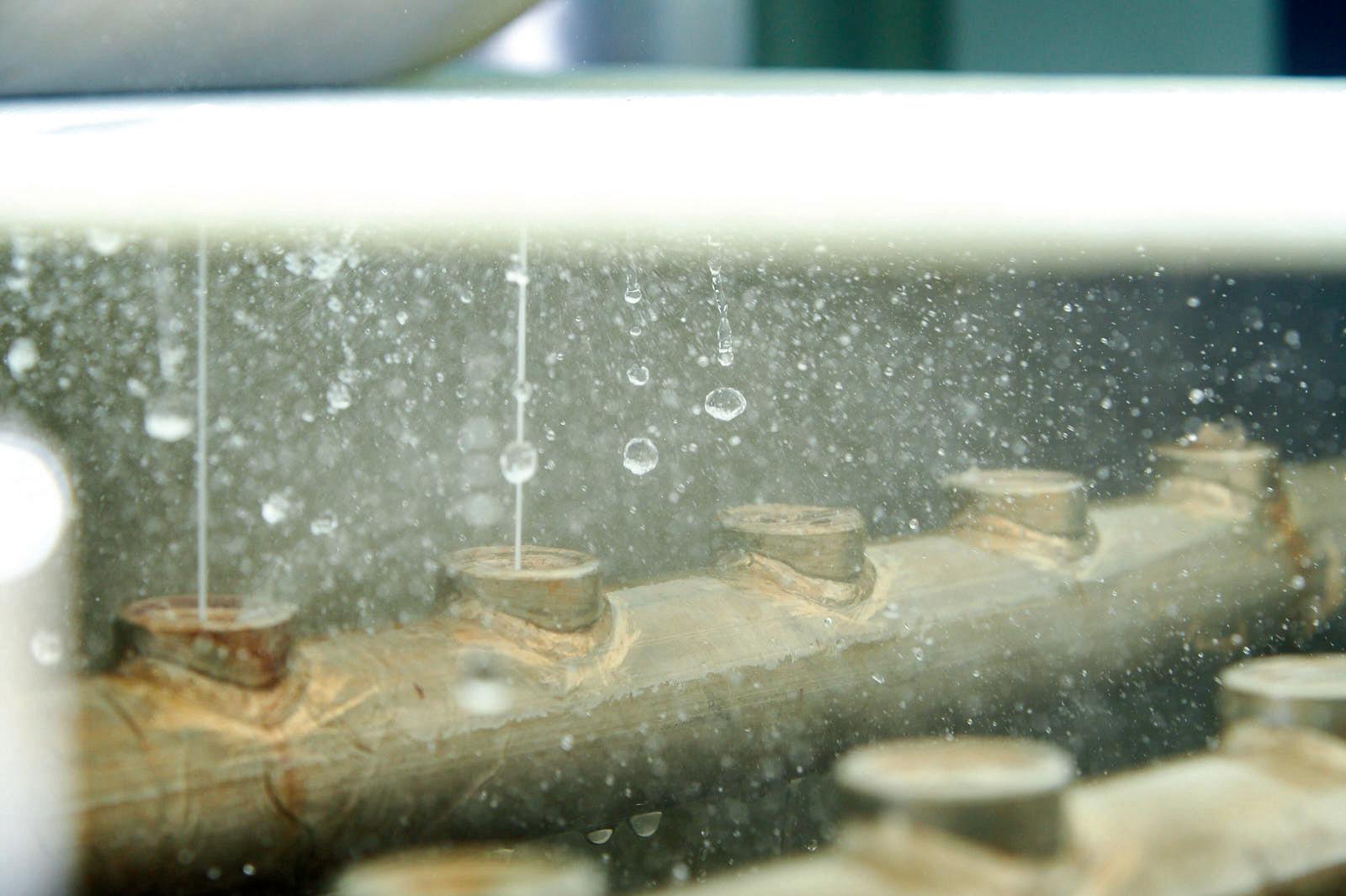
The specifications as outlined should not, however, be set in stone. This is because newlydeveloped ultra-high pressure shower systems now promise new opportunities. We have seen numerous positive results on packaging grades when using units with a nozzle diameter of 0.25mm and a pressure of 50 to 160 bar. This has not led to any noticeable decrease in felt wear, but has provided positive results in terms of cleaning – and fresh water consumption.

Low-pressure showers for lubrication
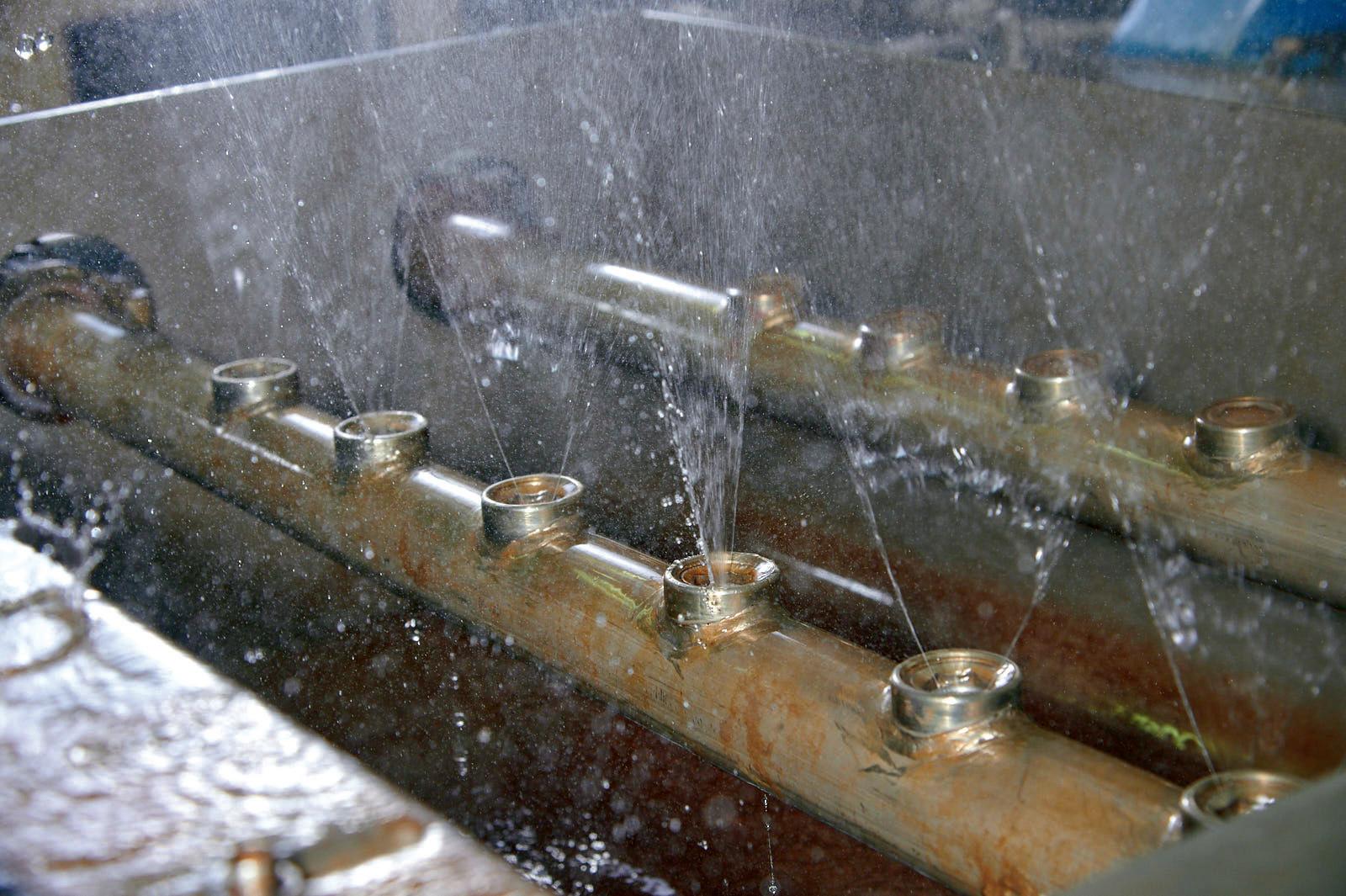
With its fan nozzles, a lowpressure shower will introduce large quantities of water to the felt. This keeps the felt moisturised throughout and provides a potent lubricating effect before the Uhle box.
Uniform water application
For ideal low-pressure spray shower operation, we recommend that the following parameters are respected: Water should be applied from all fan nozzles with a slightly overlapping jet at a distance of 100 up to 150 mm maximum from the felt surface and at a slightly inclined angle to the direction of felt travel. If water is applied unevenly (See Figures 4 and 5), trouble can develop quite rapidly. Firstly, moisture fluctuations will occur in the felt, which will be reflected in damp and dry areas (See Figure 6). The irregularities can be quickly picked up by measuring water content, or in many cases can be seen by the naked eye.
Wet/dry streaks such as these in the felt rapidly transfer to the sheet, leading to irregular cross direction moisture profiles.
Slightly overlapping fan jet
The graphic (shown in Figure 7) illustrates the importance of an overlap of fan jets. Either no overlap, or too much, will cause irregularities in cross machine profiles.
Dry streaks can, in some cases, lead directly to increased felt wear (as shown in Figures 8 and 9). This is due to a lack of lubrication and the resulting increased friction over the Uhle box cover. This then can be a cause of premature felt removal. Unlike the highpressure shower, the low-pressure version does not oscillate. Clear filtrate water is generally used to pressurise the fan nozzles with water.

Uhle boxes for dewatering
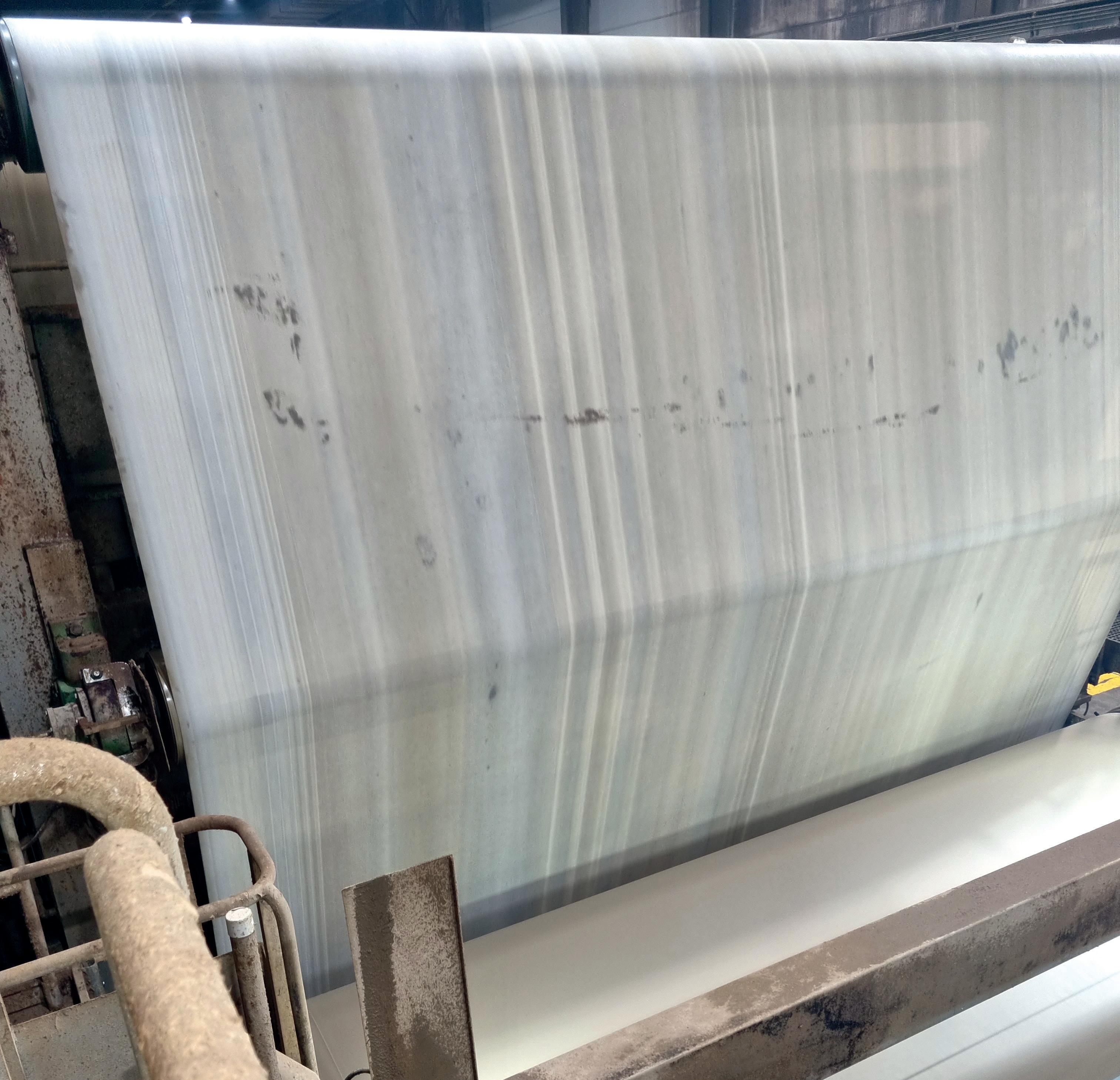
Uhle boxes have the added task of indirectly dewatering the sheet by means of the press felts. Using vacuum, some of the water transported in the clothing is sucked away by the units. This means high stress for the felt, as it is in permanent contact with the Uhle box due to the set vacuum. It should also be noted that this happens at speeds up to 2,000 metres per minute. In this case, contact also means friction, which not infrequently leads to loss of batt from the felt.
Correct adjustment of the edge deckles
With the Uhle box, there is always a risk of adjustment errors which could cause the press felt to suffer premature wear, causing early removal from the paper machine.
In one case, a felt suffered premature removal, as the whole of the fibre batt had been removed in the edge area (shown in Figure 10). This was due to incorrect setting and positioning of the edge deckles (shown in Figure 11).


These should ideally be aligned with the plastic or ceramic blades of the Uhle box. Otherwise, the felt rubs permanently against the edge of the raised deckles and as a result continuously wears away the fibre batt.
Special care with seam felts
Heimbach often observes that edge deckles are not optimally set. Just as with the low-pressure shower units, a deficiency like this can lead to uneven moisture – this time in the sensitive edge area of the press felt (see Figure 12). This can become very critical where seam felts are concerned: Such fluctuations put a lot of stress on the MD yarns and seam loops. As a result there will be risk of seam opening.

Correct vacuum settings
There is no rule of thumb for the correct vacuum in a Uhle box. It can be stated, however, that higher vacuums generally lead to higher felt wear. This is one of the main reasons why Heimbach clearly favours nip dewatering at medium and high speeds. In these cases, it is possible to run with a substantially reduced vacuum or even to completely dispense with Uhle boxes. This reduces felt wear but also saves energy.
Replace worn, sharp-edged covers
It is important to ensure that nothing is deposited on the Uhle box cover that could lead to melt marks in the press felt. Worn or sharp edged covers must be replaced as they can have a negative impact on felt service life.
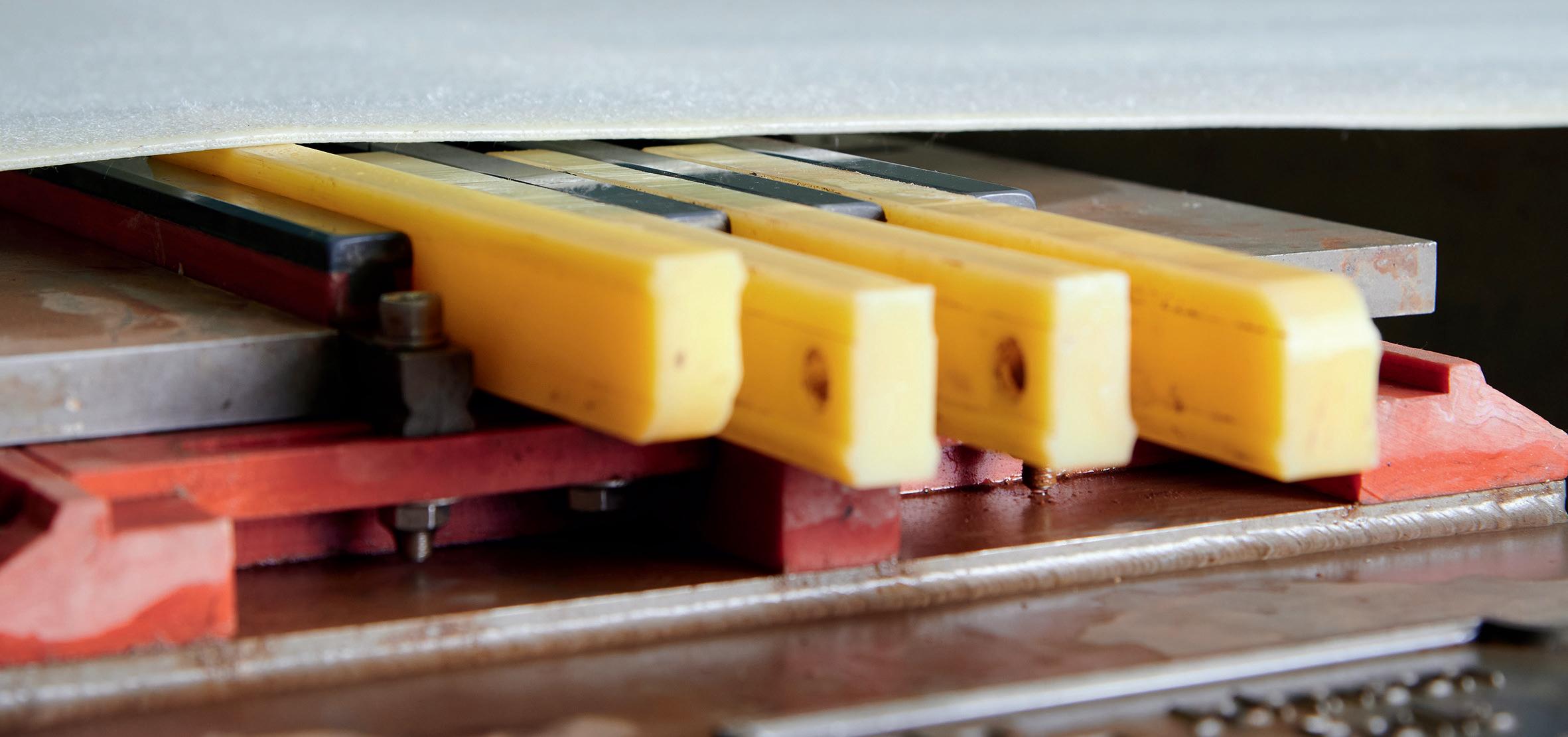
Slotted or drilled Uhle box covers?
Slotted covers remain the standard here. It is however true that drilled covers have become more popular. The clothing expert Heimbach certainly sees the benefits of this cover design type: be it through reduced felt wear or improved profiles of felt and sheet.
More information from www. heimbach.com







